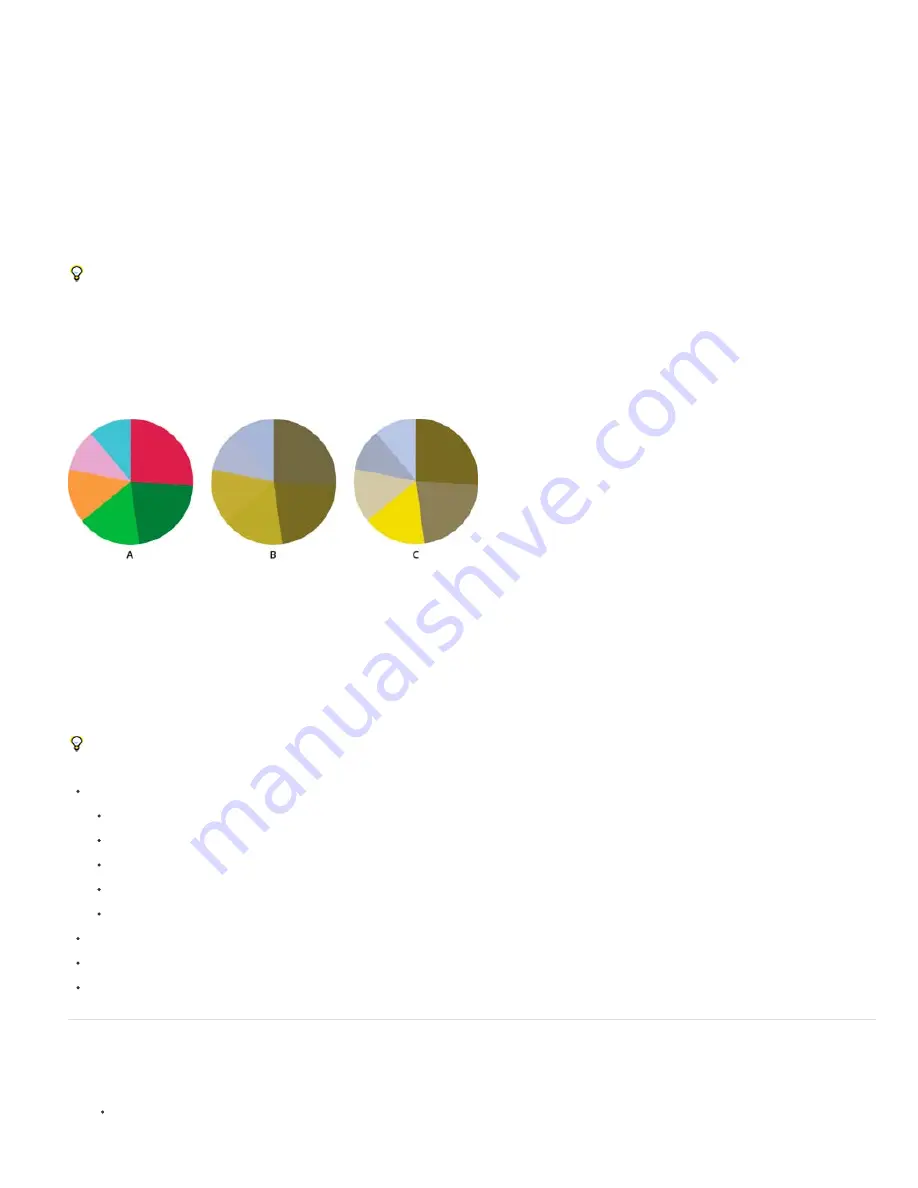
Custom soft-proof options
Device To Simulate
Specifies the color profile of the device for which you want to create the proof. The usefulness of the chosen profile depends
on how accurately it describes the device’s behavior. Often, custom profiles for specific paper and printer combinations create the most accurate
soft proof.
Preserve CMYK Numbers or Preserve RGB Numbers
Simulates how the colors will appear without being converted to the color space of the
output device. This option is most useful when you are following a safe CMYK workflow.
Rendering Intent (Photoshop and Illustrator)
When the Preserve Numbers option is deselected, specifies a rendering intent for converting
colors to the device you are trying to simulate.
Use Black Point Compensation (Photoshop)
Ensures that the shadow detail in the image is preserved by simulating the full dynamic range of
the output device. Select this option if you plan to use black point compensation when printing (which is recommended in most situations).
Simulate Paper Color
Simulates the dingy white of real paper, according to the proof profile. Not all profiles support this option.
Simulate Black Ink
Simulates the dark gray you really get instead of a solid black on many printers, according to the proof profile. Not all profiles
support this option.
In Photoshop, if you want the custom proof setup to be the default proof setup for documents, close all document windows before choosing the
View > Proof Setup > Custom command.
Soft-proof for color blindness (Photoshop and Illustrator)
Color Universal Design (CUD) ensures that graphical information is conveyed accurately to people with various types of color vision, including
people with color blindness. Several countries have guidelines that require CUD-compliant graphics in public spaces.
The most common types of color blindness are protanopia (reduced sensitivity to red) and deuteranopia (reduced sensitivity to green). A third of
color blind people are affected strongly; the remainder have milder forms of color blindness.
Adjusting design for color blindness
A. Original image B. Color-blind proof C. Optimized design
To determine whether a document is CUD-compliant, do the following:
1. Convert the document to RGB color mode, which provides the most accurate soft-proofs for color blindness.
2. (Optional) To simultaneously view the original document and a soft-proof, choose Window > New Window (Illustrator) or Window > Arrange
> New Window (Photoshop).
3. Choose View > Proof Setup > Color Blindness, and then choose either Protanopia-type or Deuteranopia-type. (To comply with CUD, check
your document in both views.)
In Photoshop, you can print the proof. For more information, search for “Print a hard proof” in Photoshop Help.
If objects are difficult to distinguish in color blind proofs, adjust the design by doing any of the following:
Change color brightness or hue:
Pure red tends to appear dark and muddy; orange-red is easier to recognize.
Bluish green is less confusing than yellowish green.
Gray may be confused with magenta, pale pink, pale green, or emerald green.
Avoid the following combinations: red and green; yellow and bright green; light blue and pink; dark blue and violet.
Avoid red items on dark-colored backgrounds, or white items on yellow or orange-red backgrounds.
Apply different patterns or shapes.
Add white, black, or dark-colored borders on color boundaries.
Use different font families or styles.
Save or load a custom proof setup (Photoshop, InDesign)
1. Choose View > Proof Setup > Custom.
2. Do either of the following:
To save a custom proof setup, click Save. To ensure that the new preset appears in the View > Proof Setup menu, save the preset in
Summary of Contents for Photoshop CS6
Page 1: ...ADOBE PHOTOSHOP Help and tutorials...
Page 65: ...Legal Notices Online Privacy Policy...
Page 100: ...Image and color basics...
Page 108: ...Legal Notices Online Privacy Policy...
Page 176: ...Legal Notices Online Privacy Policy...
Page 182: ...Legal Notices Online Privacy Policy...
Page 193: ...applied to the original Smart Object More Help topics Legal Notices Online Privacy Policy...
Page 236: ...Legal Notices Online Privacy Policy...
Page 286: ...More Help topics Adjusting image color and tone in CS6 Legal Notices Online Privacy Policy...
Page 376: ...Legal Notices Online Privacy Policy...
Page 457: ...Text...
Page 461: ...Legal Notices Online Privacy Policy...
Page 548: ...Legal Notices Online Privacy Policy...
Page 570: ...Saving and exporting...
Page 598: ...Printing...
Page 627: ...Legal Notices Online Privacy Policy...
Page 646: ...Web graphics...
Page 662: ...Legal Notices Online Privacy Policy...
Page 722: ...Legal Notices Online Privacy Policy...
Page 730: ...Color Management...
Page 739: ......
Page 748: ......
















